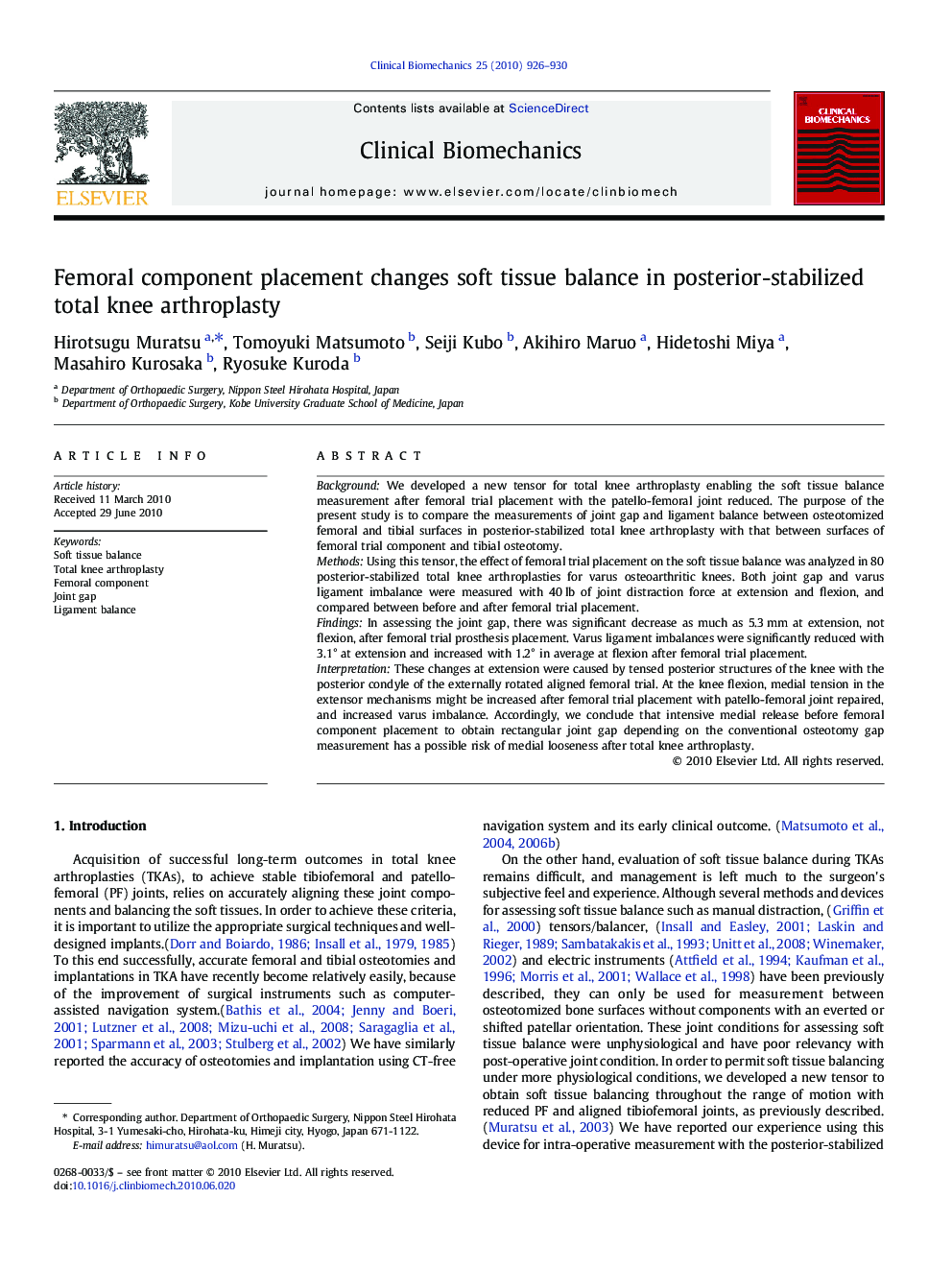| Article ID | Journal | Published Year | Pages | File Type |
|---|---|---|---|---|
| 4050989 | Clinical Biomechanics | 2010 | 5 Pages |
BackgroundWe developed a new tensor for total knee arthroplasty enabling the soft tissue balance measurement after femoral trial placement with the patello-femoral joint reduced. The purpose of the present study is to compare the measurements of joint gap and ligament balance between osteotomized femoral and tibial surfaces in posterior-stabilized total knee arthroplasty with that between surfaces of femoral trial component and tibial osteotomy.MethodsUsing this tensor, the effect of femoral trial placement on the soft tissue balance was analyzed in 80 posterior-stabilized total knee arthroplasties for varus osteoarthritic knees. Both joint gap and varus ligament imbalance were measured with 40 lb of joint distraction force at extension and flexion, and compared between before and after femoral trial placement.FindingsIn assessing the joint gap, there was significant decrease as much as 5.3 mm at extension, not flexion, after femoral trial prosthesis placement. Varus ligament imbalances were significantly reduced with 3.1° at extension and increased with 1.2° in average at flexion after femoral trial placement.InterpretationThese changes at extension were caused by tensed posterior structures of the knee with the posterior condyle of the externally rotated aligned femoral trial. At the knee flexion, medial tension in the extensor mechanisms might be increased after femoral trial placement with patello-femoral joint repaired, and increased varus imbalance. Accordingly, we conclude that intensive medial release before femoral component placement to obtain rectangular joint gap depending on the conventional osteotomy gap measurement has a possible risk of medial looseness after total knee arthroplasty.
